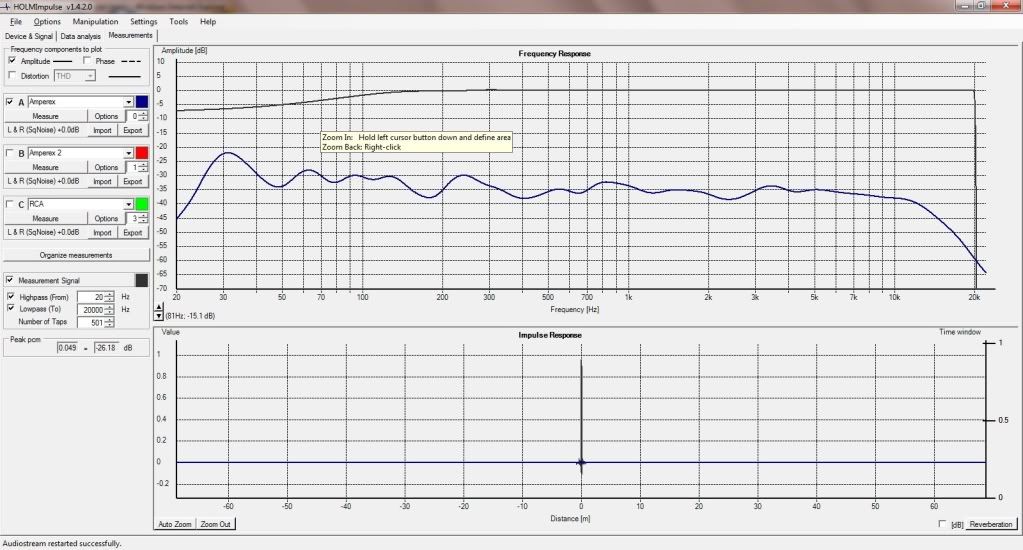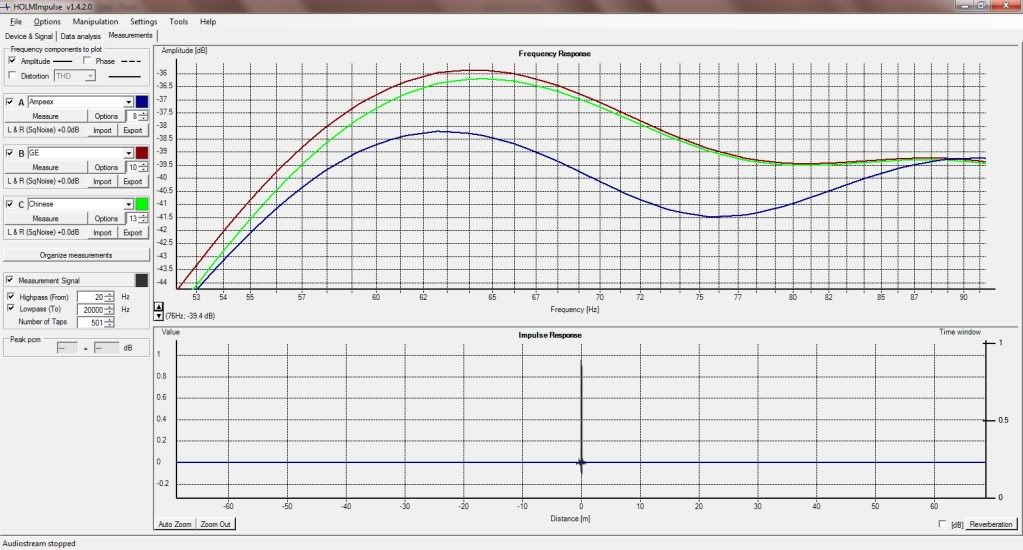Bernard
Well-known member
My front wall consists of all windows, possibly the worst arrangement for dipoles. Panel traps are not an option (blocks the view), so I toyed with the idea of buying ASC Tube Traps and placing them behind each speaker, to block the back wave; MOON (Greg) has had great success doing this). BUT, my wife did not want to have "two more towers" in the room.
So I decided that I would place the traps on the bass cabinets of my SL3's. I contacted ASC to ask them their opinion, and they thought it was a good idea. I then decided that I would build some myself instead, as I did not need bass traps as such there; I just needed to absorb the back wave.
A friend of mine made some wooden barbells for me. I wrapped them in plastic mesh, glued 4 layers of a thin blanket to the mesh, then covered them with a nice-looking cloth. Total cost of all the material for both speakers was about $170. I got the wood and the mesh from Home Depot, the blanket from Walmart, and the cloth from a fabric store.
I'm very pleased with the results. Bass seems to be better (a bit bloated, though, on some songs), and there is a lot more clarity and detail in instruments and vocals. In some cases I hear new instruments in the mix.
My wife likes the results and also hears the changes,
Attached are pictures of various stages of the build.

So I decided that I would place the traps on the bass cabinets of my SL3's. I contacted ASC to ask them their opinion, and they thought it was a good idea. I then decided that I would build some myself instead, as I did not need bass traps as such there; I just needed to absorb the back wave.
A friend of mine made some wooden barbells for me. I wrapped them in plastic mesh, glued 4 layers of a thin blanket to the mesh, then covered them with a nice-looking cloth. Total cost of all the material for both speakers was about $170. I got the wood and the mesh from Home Depot, the blanket from Walmart, and the cloth from a fabric store.
I'm very pleased with the results. Bass seems to be better (a bit bloated, though, on some songs), and there is a lot more clarity and detail in instruments and vocals. In some cases I hear new instruments in the mix.
My wife likes the results and also hears the changes,
Attached are pictures of various stages of the build.

Last edited:


















